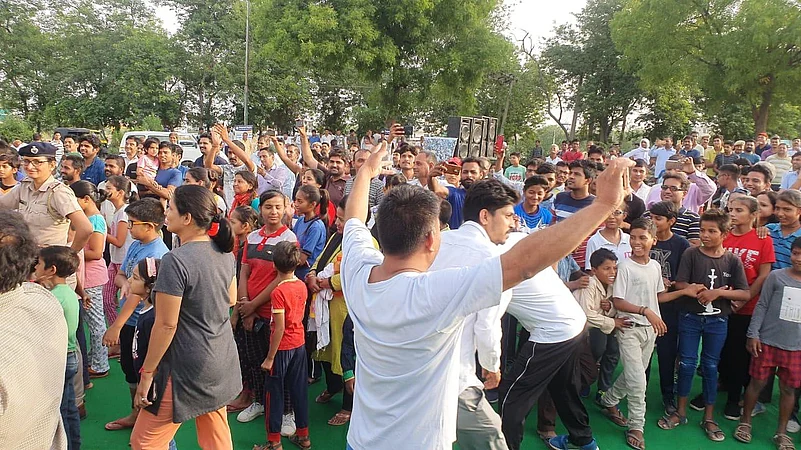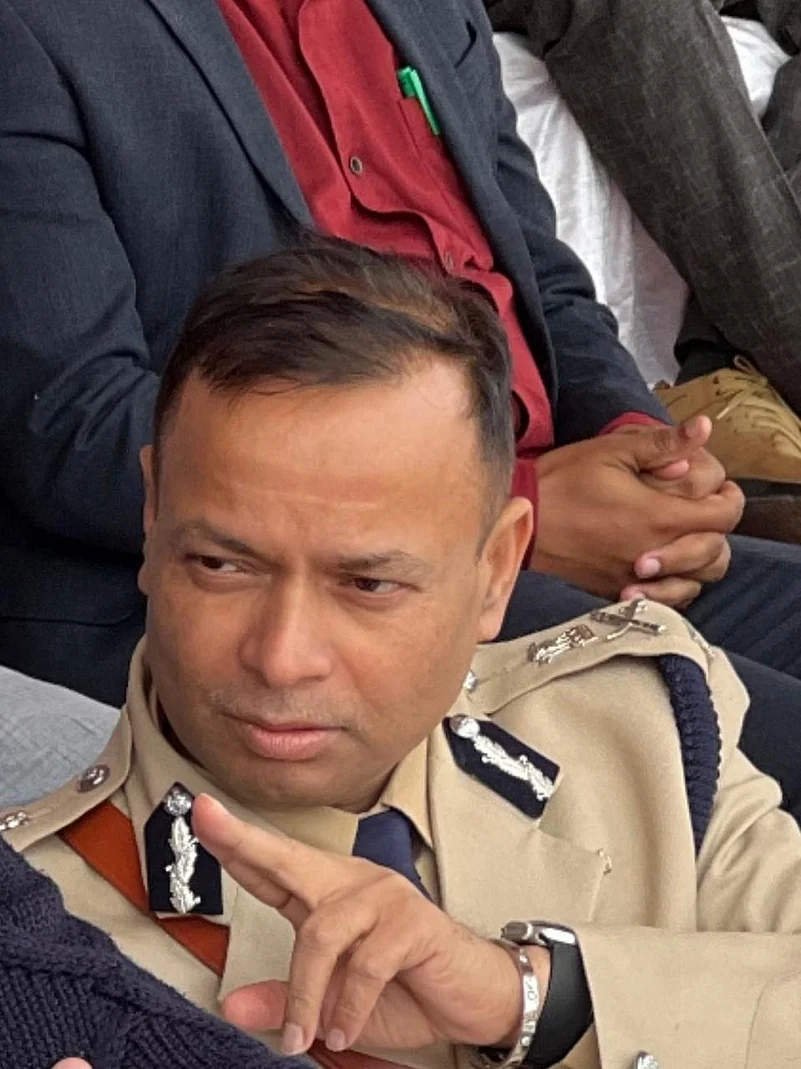OP Singh, IPS, on listening as governance, the Haryana Model of Sports, and why public trust is too important to be left to chance.
OP Singh, IPS, has earned that trust over three decades — not by chasing the spotlight, but by building systems that quietly deliver. Known as the Marathon Man of Haryana, he라이브 바카라 used road races, police data reform, drug prevention programs, and sustainable infrastructure design to bring citizens and the state closer — and to make public institutions more humane.
His Play for India framework transformed Haryana into a national sports success story. Initiatives like Raahgiri and Golf with Sarpanch replaced hierarchy with shared ground. District marathons doubled as strategic platforms to build SHO-level intelligence networks that helped preempt flashpoints and roadblocks. Behind the scenes, Singh introduced precision tools like desperation mapping — identifying high-risk repeat offenders shielded by social and political cover — a strategy that helped curb violent crime across multiple districts.
He currently leads Haryana라이브 바카라 statewide efforts in drug enforcement and prevention, the revamping of forensic science labs, and the transition toward greener, smarter police infrastructure.
“Governance isn’t just about delivery. It라이브 바카라 about belonging.”
In this conversation, Singh reflects not on headlines, but on habits — and the deeper value of showing up, listening early, and building systems that don’t just function, but connect.
Trust Through Sport

Q: Let라이브 바카라 talk about Haryana라이브 바카라 sports transformation. What was the thinking behind the Play for India approach?
OP Singh: The idea was to build a system where talent could surface without bias or dependency. We introduced SPAT — the Sports and Physical Aptitude Test — open to all children aged 8 to 19. Every year, over 15 lakh children participated, and 5,000 were awarded scholarships.
We also gave special athletes the same support as their peers and created a direct link between performance and public employment. The entire model was revenue-neutral and retraining-neutral — we worked with what we had, just more effectively. By the late 2000s, the Haryana Model of Sports was being mentioned alongside Gujarat라이브 바카라 economic model and Bihar라이브 바카라 developmental surge.
Marathons as Healing, Marathons as Intelligence

Q: You became known as the Marathon Man of Haryana. Can you share how that came about?
OP Singh: After the agitation over job reservations, there was a social fracture. Road running helped us build shared space — no speeches, no politics, just movement and togetherness.
There was a policing benefit too. We asked each SHO to maintain working ties with at least fifty local influencers — each connected to a group of youth. Ostensibly, this was to boost marathon participation. In practice, it became a grassroots network of early warning and social intelligence. It gave police real-time insight and helped avert escalation — not with force, but with familiarity.
Redesigning How the State Shows Up
Q: You’ve led civic initiatives like Raahgiri and Golf with Sarpanch. What made those work?
OP Singh: They created neutral, informal spaces where government and citizens could meet as people. Raahgiri broke the colonial posture we’d unconsciously inherited — that governance must appear distant to be respected. Golf with Sarpanch was the same idea: equal footing, real talk.
The Logic Behind Restraint
Q: In high-pressure roles — like the farmer protests and the Khori eviction — you chose non-confrontational approaches. Why?
OP Singh: Because sometimes restraint is the stronger act. During the farmer agitation, we saw plans to block the Badarpur border. We engaged early, understood the pressures on protest leaders, and kept the situation from escalating. With Khori — a court-mandated eviction — we led with dignity and coordination. Law doesn’t need to roar to be respected.
Targeted Enforcement, Creative Prevention

Q: You’re currently leading Haryana라이브 바카라 campaign against drugs. What라이브 바카라 your approach?
OP Singh: Two prongs: one hard, one soft. We’ve gone after traffickers with sustained action — arrests, seizures, property attachment, and preventive detentions. But we’re equally focused on awareness and prevention.
Programs like Ram Gurukul Gaman and Namak Lota Abhiyan bring youth into dialogue with purpose and identity. Chakravyuh — our school-based, escape-room-inspired learning model — uses play to teach life skills, risk avoidance, and peer leadership. Students learn by making choices, not just hearing lectures.
We also developed desperation mapping — identifying young, repeat offenders who are gang-linked, socially shielded, and politically emboldened. We use targeted teams to keep them under pressure, reduce their influence, and prevent them from graduating into more serious crime. It라이브 바카라 shown real results — in reduced shootings, extortion, and kidnapping.
Systems Nobody Sees, Results Everyone Feels
Q: You’ve revived silent but critical systems — cybercrime units, forensic labs, crime data networks. Why this focus?
OP Singh: Because when systems stop working, people stop believing. CCTNS had become a black box — data went in, but nothing useful came out. The issue wasn’t the software — it was that FIRs are narrative, and the system needed structured data. We redesigned how information was entered, with drop-down fields and logic paths. Suddenly, the system worked.
We’re doing similar work reviving forensic science infrastructure — cutting case backlogs, streamlining workflows, aligning lab capacity with caseloads. Quiet work. But vital.
A Green Shift in Uniform
Q: You’re also reshaping police infrastructure. What라이브 바카라 the goal there?
OP Singh: We’re rethinking how police buildings are designed. That means green practices — energy efficiency, natural light, rainwater harvesting, sustainable materials. It라이브 바카라 not about making things flashy. It라이브 바카라 about dignity, functionality, and climate consciousness. A police station should reflect care — for the officers inside, and the public who walk through its doors.
The Power of Listening

Q: What do you hope stays with the next generation of officers?
OP Singh: That trust is earned, not inherited. That early listening prevents late conflict. That your job isn’t to be visible — it라이브 바카라 to be credible. And that a consistent, human approach builds systems that last longer than any one posting.
Q: You’ve written three books alongside your service. What role does writing play for you?
OP Singh: Writing helps me reflect. HauslaNama is about quiet resilience. Jin Dhoondha Tin Paiyan questions assumptions and beliefs we carry without examination. Say Yes to Sports documents how we turned an idea into a working model — without new money, without excuses.
These books are part of a larger conversation I hope to keep contributing to — about governance that is fair, responsive, and future-facing.
Q: And what comes next?
OP Singh: I’m still serving, and still learning. I’ll continue working in the space between citizen and institution — strengthening it wherever I can. There라이브 바카라 still more to do. I’m ready for what comes.
5 Quiet Innovations by OP Singh
Sports as Governance
Launched SPAT — a structured, merit-based test that brought over 15 lakh children annually into sports. Gave scholarships and job-linked incentives, making sports aspirational and accessible across Haryana.
Marathons for Social Healing
Used community running to rebuild trust post-conflict. District marathons doubled as community intelligence networks, helping SHOs prevent flashpoints with early intervention.
Desperation Mapping
Pioneered a precision policing tool to identify high-risk repeat offenders and neutralise their networks — resulting in a sharp drop in gang-led crimes and public shootings.
Raahgiri & Golf with Sarpanch
Designed open, informal forums that broke colonial-era posturing between public officials and citizens — encouraging direct dialogue, shared space, and mutual respect.
Greening the Police
Currently reimagining police infrastructure with sustainable, cost-effective design — integrating energy efficiency, water reuse, and climate-conscious construction across the state.















